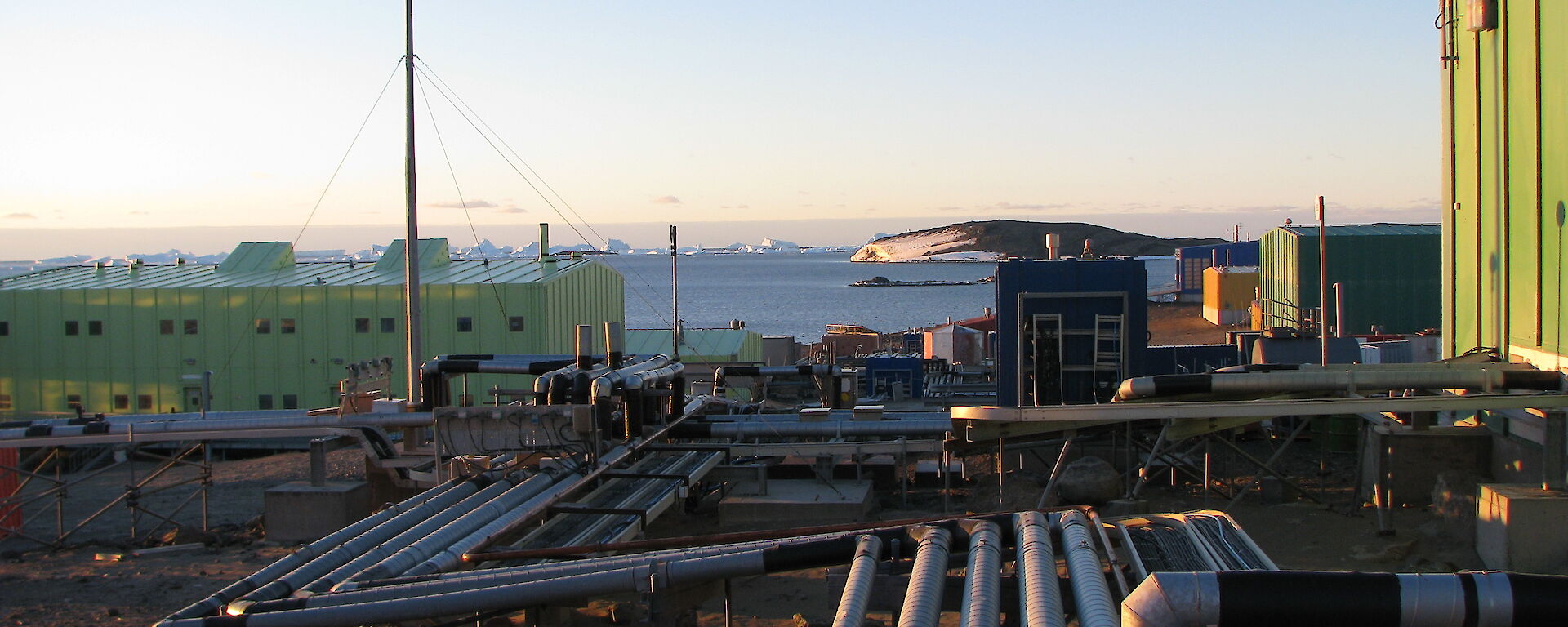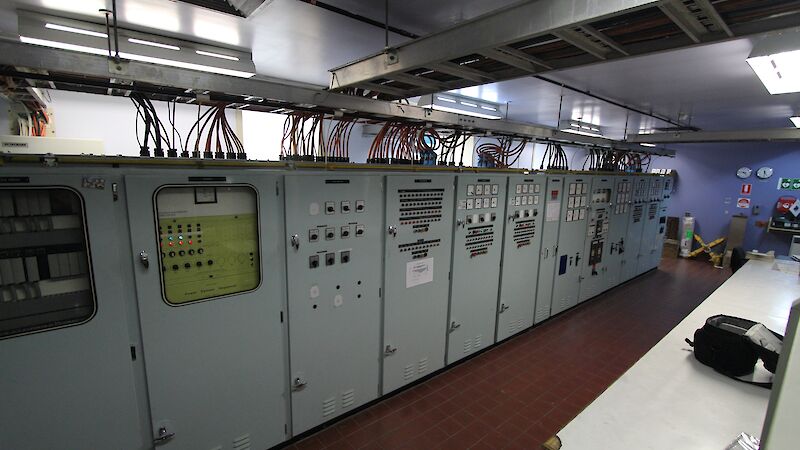Michel Abi Saab, Manager of Sustainability at Masdar — an energy efficiency and renewable energy company based in Abu Dhabi — visited Casey research station in February, accompanied by Australian Antarctic Division Infrastructure Engineer, David Waterhouse.
Together the pair surveyed energy and water use on the station and options for savings.
“We did a qualitative survey of electricity consumption for domestic, industrial and scientific purposes, and on our heating systems and water use,” Mr Waterhouse said.
“Most of our buildings are 30 years old, and while everything works, technology and the philosophy of resource use has moved on.”
The pair found a range of potential savings, including consolidating functions currently housed in multiple small buildings into fewer large buildings, replacing conventional lights with LEDs, replacing tap fittings with modern low-flow ones, reducing temperature set points in buildings, and using variable speed drives for fans and pumps.
While some of these changes are already underway or planned, others are more difficult to implement because of the age of control systems used to run some infrastructure.
“We use hot water to transfer heat from the main powerhouse to buildings around our stations, and you can control the speed of flow based on the heating demand,” Mr Waterhouse said.
“At the moment we pump water around at a fixed speed, but if we varied the speed to fit with demand we could reduce the energy the pump is consuming. However, we need good data logging and analysis capabilities to optimise such a change, and our ageing building control systems have limited capacity to do this.”
These and other issues will be examined in a report by Mr Abi Saab, so that Masdar and the Antarctic Division can identify the forms further collaboration on energy efficiency will take.
As part of the new relationship, the Masdar Insititute, which is part of the Khalifa University of Science and Technology, will also collaborate on a sea ice research project.
Australian Antarctic Division Director, Dr Nick Gales, said the project would be led by the Masdar Institute’s Dr Marouane Temimi, an expert in the development of information on weather and water processes, through the use of remote sensing and geographic information systems. Dr Temimi will work with leading sea ice researchers from the Australian Antarctic Division and the Antarctic Climate and Ecosystems Cooperative Research Centre.
“The sea ice research project aims to combine the latest advances in remote sensing, data assimilation and forecasting, to better understand the effects of climate change on the characteristics and behaviour of Antarctic sea ice,” Dr Gales said.
“We hope that this work will be an important step towards an improved ability to forecast future sea ice coverage from a scientific, operational and shipping perspective.”
The collaboration was formally agreed in January through the signing of a Letter of Intent by Chief Executive Officer of Masdar, Mohamed Jameel Al Ramahi, Australia’s Ambassador to the United Arab Emirates, Mr Arthur Spyrou, on behalf of the Australian Antarctic Division, and Dr Arif Sultan Al Hammadi, Interim Executive Vice President, Khalifa University of Science and Technology.
Wendy Pyper and Eliza Grey
Australian Antarctic Division



